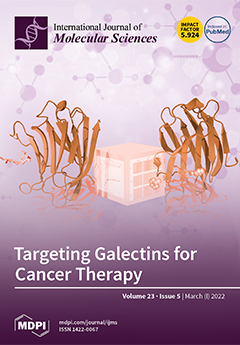Acute hepatopancreatic necrosis disease (AHPND) in shrimp is caused by
Vibrio strains that harbor a pVA1-like plasmid containing the
pirA and
pirB genes. It is also known that the production of the PirA and PirB proteins, which are the key factors that drive
[...] Read more.
Acute hepatopancreatic necrosis disease (AHPND) in shrimp is caused by
Vibrio strains that harbor a pVA1-like plasmid containing the
pirA and
pirB genes. It is also known that the production of the PirA and PirB proteins, which are the key factors that drive the observed symptoms of AHPND, can be influenced by environmental conditions and that this leads to changes in the virulence of the bacteria. However, to our knowledge, the mechanisms involved in regulating the expression of the
pirA/
pirB genes have not previously been investigated. In this study, we show that in the AHPND-causing
Vibrio parahaemolyticus 3HP strain, the
pirAvp and
pirBvp genes are highly expressed in the early log phase of the growth curve. Subsequently, the expression of the PirA
vp and PirB
vp proteins continues throughout the log phase. When we compared mutant strains with a deletion or substitution in two of the quorum sensing (QS) master regulators,
luxO and/or
opaR (
luxOD47E, Δ
opaR, Δ
luxO, and Δ
opaRΔ
luxO), our results suggested that expression of the
pirAvp and
pirBvp genes was related to the QS system, with
luxO acting as a negative regulator of
pirAvp and
pirBvp without any mediation by
opaRvp. In the promoter region of the
pirAvp/
pirBvp operon, we also identified a putative consensus binding site for the QS transcriptional regulator AphB. Real-time PCR further showed that
aphBvp was negatively controlled by LuxO
vp, and that its expression paralleled the expression patterns of
pirAvp and
pirBvp. An electrophoretic mobility shift assay (EMSA) showed that AphB
vp could bind to this predicted region, even though another QS transcriptional regulator, AphA
vp, could not. Taken together, these findings suggest that the QS system may regulate
pirAvp/pirBvp expression through AphB
vp.
Full article






